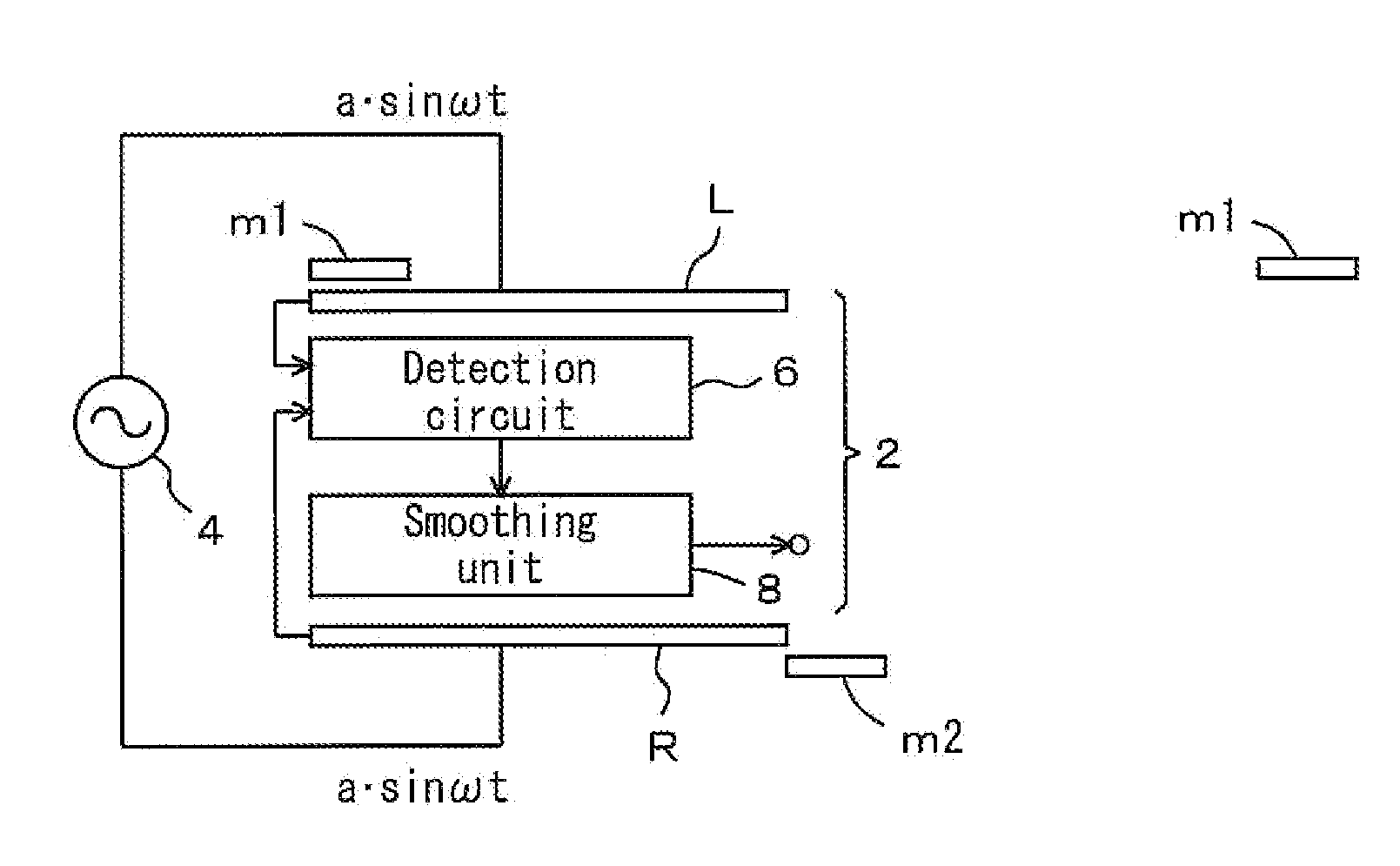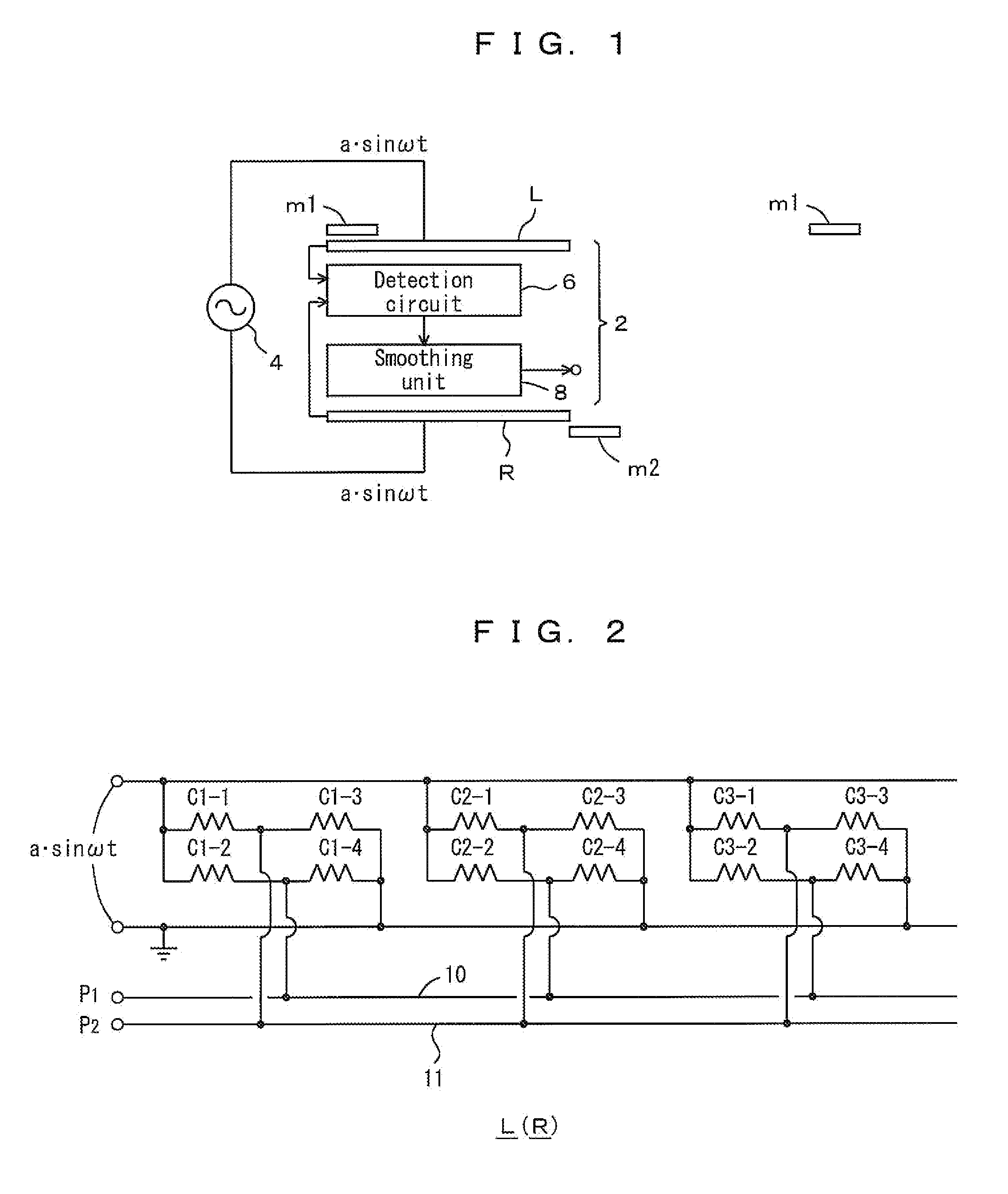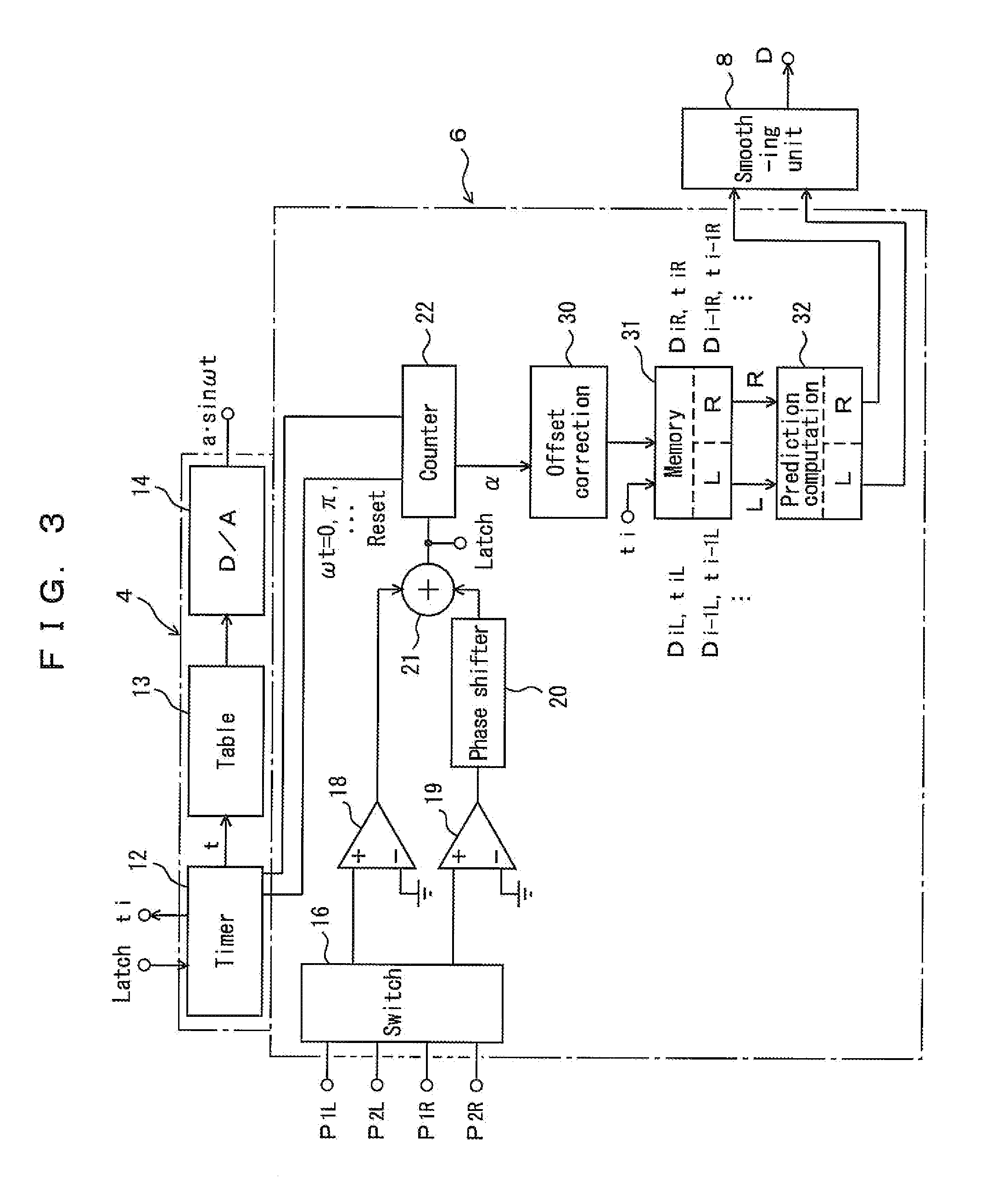Position Detector and Position Detection Method
a position detector and position detection technology, applied in the field of position detectors, can solve the problems of large noise inputted to a servo system operated based on the indicator value of the position detectors, and achieve the effect of improving the accuracy of position detectors and accuracy
- Summary
- Abstract
- Description
- Claims
- Application Information
AI Technical Summary
Benefits of technology
Problems solved by technology
Method used
Image
Examples
Embodiment Construction
[0021]FIGS. 1 to 7 show the embodiment. In the drawings, reference numerals m1, m2 denote magnetic marks provided along left and right sides of a travel rail for moving objects (not shown), e.g., overhead traveling vehicles in the embodiment. For example, the mark is a combination of magnetizable material and non-magnetizable material, or a permanent magnet or the like. A position detector 2 is attached to a moving object (not shown), and made up of a pair of left and right coil arrays L, R (left and right sensor units), a common alternating current power supply circuit for driving the coil arrays L, R, a common detection circuit 6, and a smoothing unit 8.
[0022]The coil arrays L, R have the same structure. A layout of coils of the coil arrays L, R is shown in FIG. 2. For example, four coils C1-1 to C1-4 are arranged in one set, and likewise, coils C2-1 to C2-4 are arranged in one set, and coils C3-1 to C3-4 are arranged in one set. The other coils are arranged in the same manner. Tw...
PUM
 Login to View More
Login to View More Abstract
Description
Claims
Application Information
 Login to View More
Login to View More - R&D
- Intellectual Property
- Life Sciences
- Materials
- Tech Scout
- Unparalleled Data Quality
- Higher Quality Content
- 60% Fewer Hallucinations
Browse by: Latest US Patents, China's latest patents, Technical Efficacy Thesaurus, Application Domain, Technology Topic, Popular Technical Reports.
© 2025 PatSnap. All rights reserved.Legal|Privacy policy|Modern Slavery Act Transparency Statement|Sitemap|About US| Contact US: help@patsnap.com



